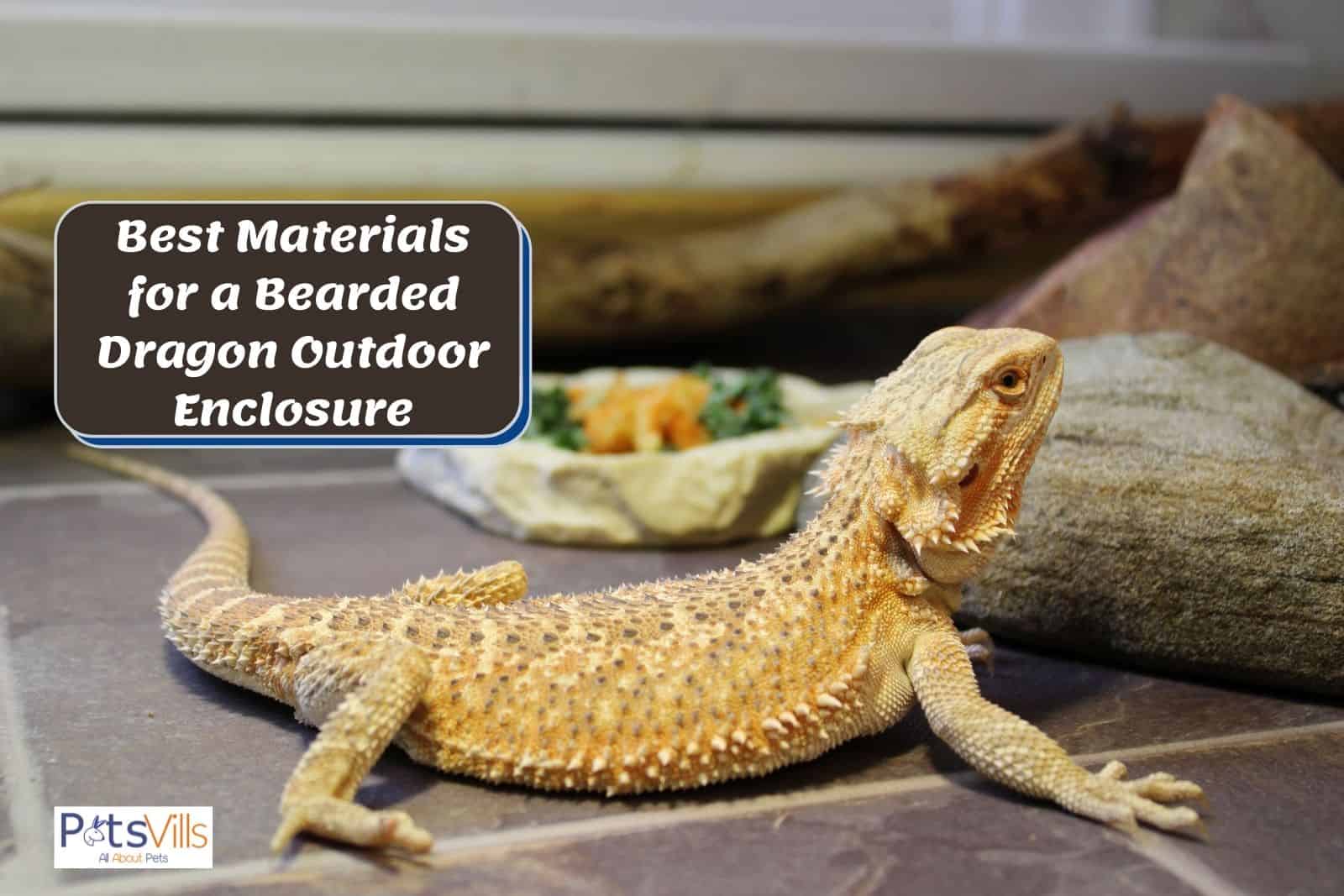A few days ago, I received a couple of messages revolving around the same question, “what type of materials have you used for an outdoor enclosure?”
Knowing this will give new bearded dragon owners –even experienced ones, ideas about the materials they can use for their outdoor enclosure.
And you’re just on the right page as I’ll be outlining my favorite materials for an outdoor enclosure for beardies!
Let’s just jump right in, shall we?
Check: How to Make a DIY Bearded Dragon Enclosure!
Table of Contents
Key Considerations in Choosing Materials to Use For Outdoor Enclosures
When you’re building an outdoor enclosure for your beardie, you need to consider all factors involved concerning its habitat placement, temperature, and furnishings/entertainment.
Here’s an example of a well-thought-out bearded dragon outdoor enclosure:
1- Habitat Placement
The placement of the habitat in outdoor spaces is crucial. Refrain from placing them in outdoor environments where foreign objects, and predators, could harm them.
QUICK TIP: Install a visual barrier like an aluminum mesh or acrylic sheet so, you’ll still be able to see through the enclosure design.
MUST READ: Best Enclosure for Bearded Dragon
2- Temperature
Reptile experts recommend specific temperatures [1] during both daytime and nighttime. Extreme temperatures either above or below can have harmful effects on your pet reptile.
Ensure that the cage is kept in the shade for the majority of your pet’s time out. This way, the enclosure’s internal temperature will be kept in control.
3- Furnishings and Entertainment
Just because they’re out doesn’t mean they should be bored!
Add a few touches of furnishings in the cage; enhance the enclosure design by adding functional decoration. You can add logs, branches, rocks, and other safe foreign objects for their activities.
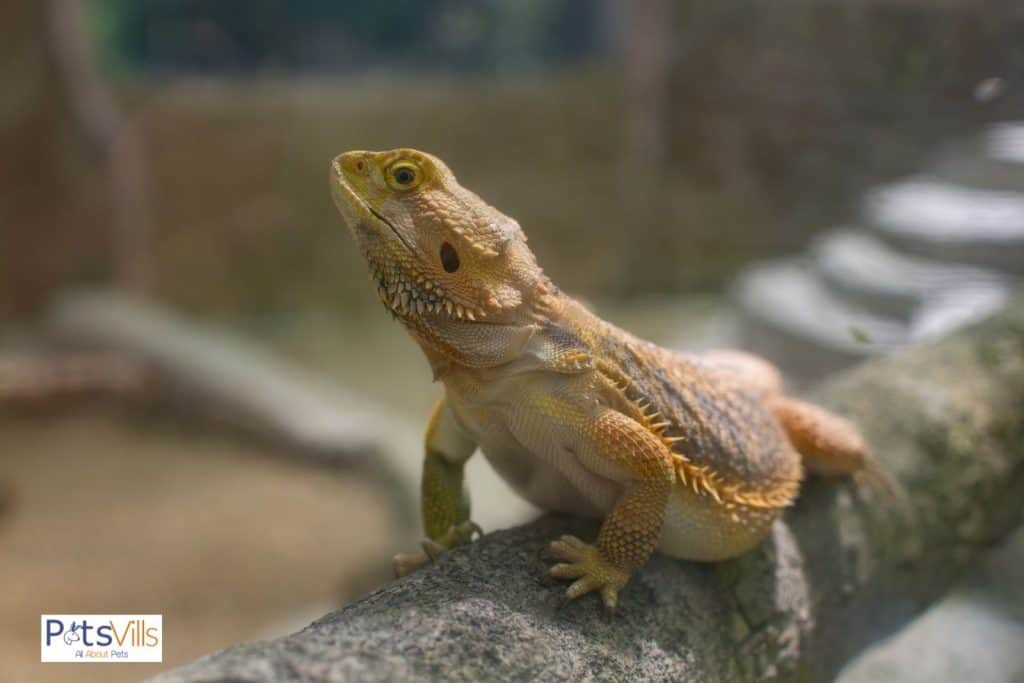
In my first attempt at building an outdoor enclosure, I tried to focus on durability and longevity. Then, I added branches, rocks, and other substrates for their entertainment as I read from experts. [2]
I chose aluminum for its corrosion resistance, impact resistance, as well as a high degree of protection it offers. This metal enclosure also allowed direct contact with my beardie, thanks to its mesh-type design.
While aluminum is one of the best materials you can get, it can be pretty expensive. So, if you’re on a budget but you want tough and sturdy enclosure types, what materials can you use?
READ: Can You Take Your Bearded Dragon Outside?
What Type of Materials Have You Used for an Outdoor Enclosure?
In this list, I’ll be enumerating the materials many owners used for their bearded dragons’ outdoor housing.
Not only that, but I will also divulge the cost of materials and construction, their benefits and advantages, and other vital information.
1- Wood and Plywood
Let’s start with the basics –wood.
Wood is the go-to material used by many dragon owners. Why? Because you can make the fence height higher for your pet not to jump up without burning a hole in your pocket.
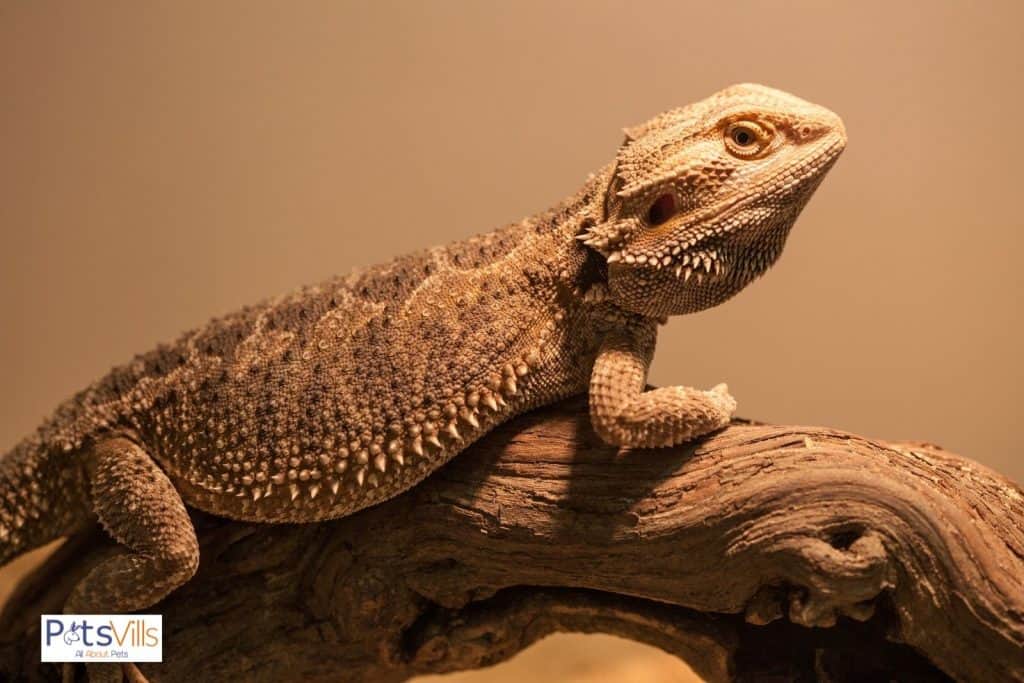
Using wood for your outdoor enclosure is a good choice because it’s cheap, easy to find, and can easily be combined with other materials.
Average Cost: In calculation, you’ll spend anywhere around $10 to $15 for the wood frame. This will depend on the quality, type of wood, and length of the wood.
2- Chicken Wire or Mesh Wire
This component is usually for the installation of the top cover of the terrarium for additional protection. Stronger and more durable ones are used as the sides of the cage, not just for the top.
Typically, chicken wires are partnered with wood frames and components. However, you can also use it with plastics, as well as aluminum –so long as they’re sturdy and stiff enough.
Average Cost: Regular mesh or chicken wire costs around $4 to $6 per yard. Branded and higher-quality ones can go as high as $15 to $20.
Check: Best Bearded Dragon Starter Kit
3- Stainless Steel
Instead of using a chicken wire, some beardie owners opt for a 16-gauge wire stainless steel mesh.
It’s much more durable, longer-lasting, and can offer a higher degree of protection. But it’s also more expensive and costly due to them being corrosion resistant.
The steel would stand as the frame, as well as the mesh wires that’ll cover the sides. Some owners also consider using aluminum instead of stainless steel as a cheaper and more affordable alternative.
You can use either mesh wires or stainless-steel screens to keep proper ventilation. They also offer a better degree of protection from unwanted guests and predators.
Average Cost: The cost will depend on the size and shape of your stainless steel. Generally, it’ll be anywhere around $3 to $5 per pound.
4- Acrylic Sheets
Another choice of material you can use would be glass. I’m not talking about mirror-type glass, I’m talking about acrylic glass [3].
It’s a good option for the walls of your vivarium/terrarium only, not as the top cover. This can restrict proper ventilation. Moreover, it can also keep a bad internal temperature if it’s too enclosed.
Ideally, if you choose glass as your enclosure’s walls, it’s important to keep the fence height at around 3 to 3 ½ feet tall. This is to avoid an unwanted animal escape.
Average Cost: Acrylic sheets are rather cheaper and more affordable than polycarbonate (PC) or tempered glass. They’re usually priced at $25 to $35 per 12 x 12 inches.
5- Plastics
Plastics can be anywhere from ABS plastic (Acrylonitrile Butadiene Styrene), PVC plastic (Polyvinyl Chloride), or any other type of thermoplastic.
ABS plastic is among the most popular since it’s the lightest, safest, and easiest to clean. The only drawback is its price – it tends to be more expensive compared to PVC and visual cages.
Average Cost: For a 12 x 24 x 1/16 ABS plastic sheet, expect to pay an average of $23.
6- Substrates
To ensure that yours will be a part of the list of high-quality enclosures, install a substrate at the base of the enclosure for added protection [4]. You can use a lot of things, but the most common are:
- Play sand
- Calcium sand
- Millets
- Gravel
- Wood shavings.
QUICK NOTE: Avoid placing the enclosure on a concrete surface because it tends to suck up heat faster; it also retains heat better. Place it on top of a soil surface for a higher degree of protection.
Check: How Long Can You Keep a Bearded Dragon Out of its Cage?
Adding Furnishings and Accessories
It’s not part of the materials for the cage, but high-quality enclosures offer tremendous amounts of activities for pet reptiles.
It can be as simple as logs, branches, rocks, ropes –to animal toys, accessories, and nest boxes or pouches for your beardie. Keep them moving while they get that vitamin D!
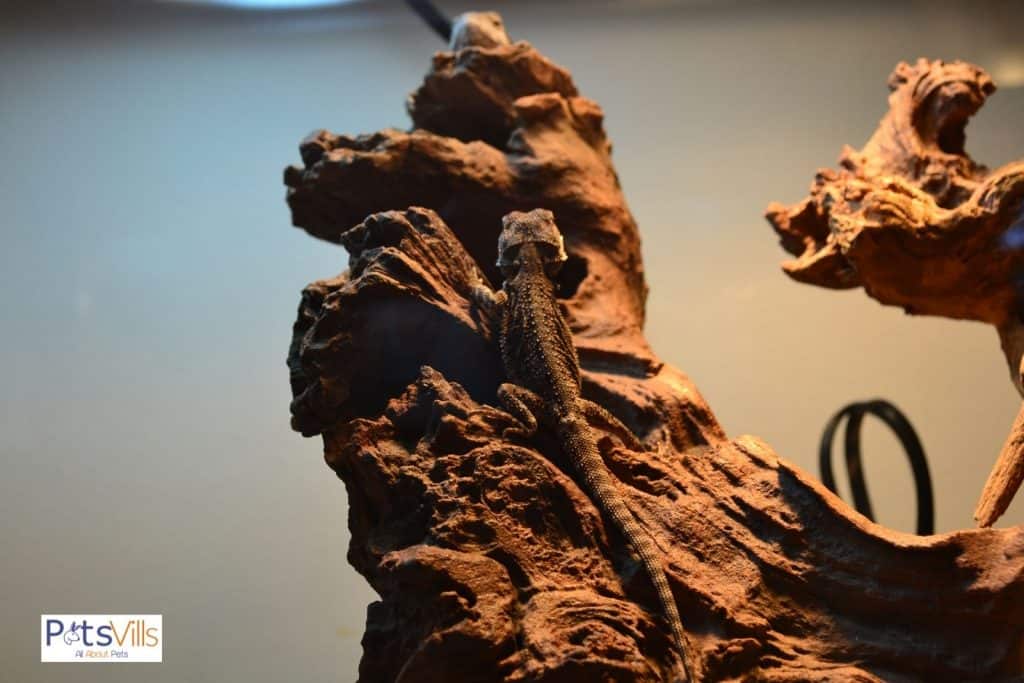
The outdoor spaces I have for my beardies contain natural and organic things like wood and logs. I like making them feel they’re back in the wild, it sometimes makes them more comfortable.
Make your bearded dragon’s home a spacious and comfortable haven with a 120 gallon terrarium. Learn about the options available and make the best choice for your friend by reading ‘120 gallon terrarium bearded dragon‘ today!
FAQs About the Outdoor Enclosure Spaces for Bearded Dragons
Feel like you’re short of information? Here are some other questions related to your beardie’s outdoor enclosure materials:
What Materials Are Safe For Bearded Dragons?

Wood, plastic, glass, and corrosion-resistant steel are materials that offer a high degree of protection and safety for your beardies. Just ensure that there aren’t any sharpened edges on these materials.
How Big Should Your Outdoor Enclosure Be?
Juvenile bearded dragons need a 10-gallon tank (in size) at least. Adults, on the other hand, need a tank that’s about 20 to 50 gallons.
Can I Use Rocks From Outside For My Bearded Dragon?
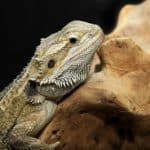
Yes, you can use rocks from your home as décor for the enclosure. You can also make use of it as a perching area for your pet reptile.
What Materials Do You Have in Mind?
This guide has the right answer to, what materials have you used for an outdoor enclosure? We made it comprehensive, so you don’t need to go elsewhere to get more information about this topic!
References:
- 1. Caring for Your Pet Bearded Dragon [Internet]. Available from: https://cvm.ncsu.edu/wp-content/uploads/2016/12/Caring-for-your-Bearded-Dragon.pdf#:~:text=Temperature%3A%20Daytime%20maintain%20between%2075
- 2. Gardiner J. Bearded Dragon Care [Internet]. Animal Health Topics / School of Veterinary Medicine. 2019 [cited 2021 Dec 13]. Available from: https://healthtopics.vetmed.ucdavis.edu/health-topics/exotics/bearded-dragon-care
- 3. Stacey. Bearded Dragon Habitat: A Guide on the Best Tank Setup [Internet]. Reptile.Guide. 2019 [cited 2021 Dec 13]. Available from: https://reptile.guide/best-bearded-dragon-habitat/#Glass-Enclosures
- 4. BD Editors. Substrate – Definition and Examples | Biology Dictionary [Internet]. Biology Dictionary. 2016 [cited 2021 Dec 13]. Available from: https://biologydictionary.net/substrate/
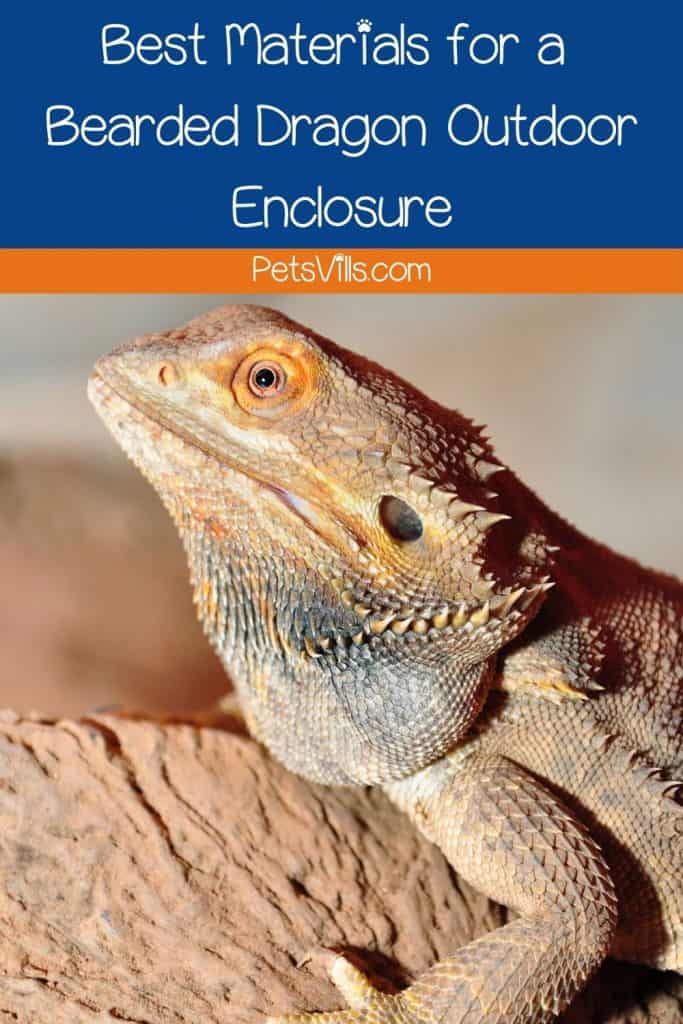
What do you think are the best types of materials for an outdoor enclosure for bearded dragons? Share below!

